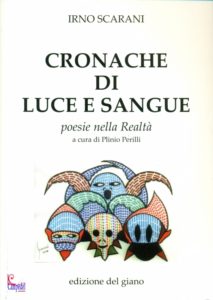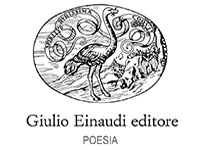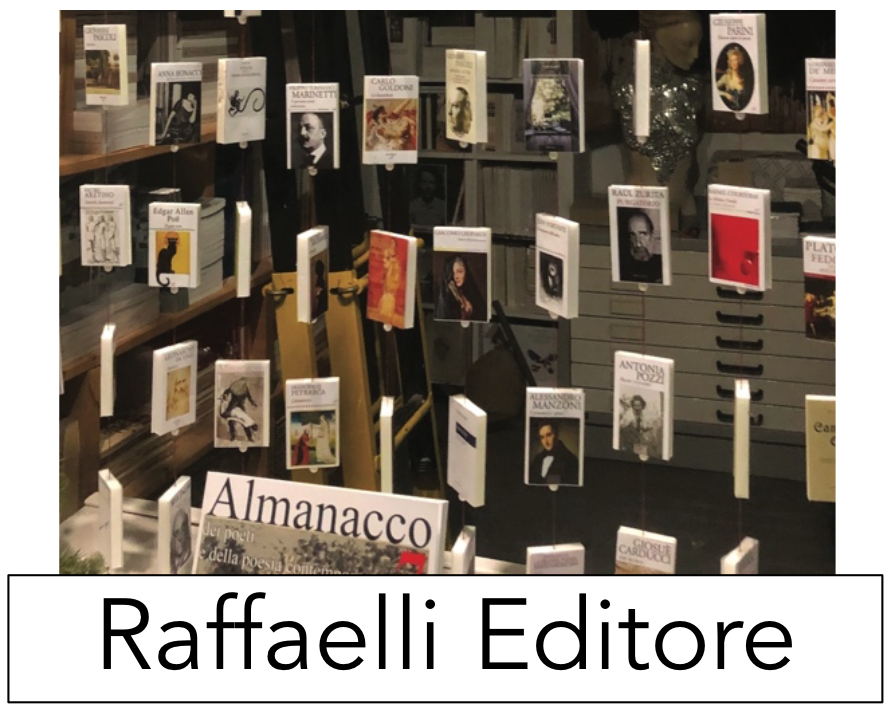NEO-ESPRESSIONISMO IN SCARANI
The contemporary art movement known as Neo-Expressionism emerged in Europe and the United States during the late 1970s and early 1980s as a reaction to the traditional abstract and minimalist art standards that had previously dominated the market. Neo-Expressionist artists resurrected the tradition of depicting content and adopted a preference for more forthright and aggressive stylistic techniques, which favored spontaneous feeling over formal structures and concepts. The movement’s predominant themes, which include human angst, social alienation, and political tension reemerge in a similar bold tone in artist and poet Irno Scarani’s Cronache di luce e sangue (Edizioni del Giano). This unapologetic, vigorous, and sensible poetic contemplation revisits some of the most tragic events that afflicted humanity during the twentieth century. Originating from a personal urgency to evaluate the experience of human existence and the historical calamities that bear everlasting consequences, the poems, better yet chronicles, which comprise this volume daringly examine the fear and discomfort that surround these disquieting skeletons of the past. Cronache di luce e sangue reflects the author’s firsthand experience in and exposure to the civil war in Italy—the highly controversial period between September 8, 1943, the date of the armistice of Cassibile, and May 2, 1945, the surrender of Nazi Germany, when the Italian Resistance and the Co-Belligerent Army joined forces in a war against Benito Mussolini’s Fascist Italian Social Republic. Born in Milan in 1937 during the final period of the Fascist regime, Scarani became acquainted with violence and war at a very young age. As a child, he spent much of his time seeking refuge from ongoing bombardments in the basement of the residential complex where he lived with his family. After a short sojourn at his grandmother’s residence, he returned to Milan with his family, where they lived for the duration of the civil war. As a young man, he participated in social and intellectual gatherings, which allowed him to become acquainted with prominent writers, intellectuals, and artists. In addition to his poetic career, he is also an accomplished artist and has held a number of private and public exhibitions of his work. Needless to say, a childhood tainted by an all too early encounter with human cruelty and incomprehensible suffering produced a conscious artist whose memory is haunted by moments that have impacted the modern world and endangered humanity. Scarani’s poetic repertoire consists of a number of poems concerning the human spirit, nature, and the very experience of existence. Some of his most acclaimed works of poetry include Occhio di presagio, L’oscuro germoglio della notte, Un quotidiano esistere, Voce nascente voce morente, La cadenza dell’amore, and Frammenti del viaggio. Saturated with intensity and passion, Scarani’s words scream for a reawakening of the human conscience. The title of the work itself, translated as Chronicles of Light and Blood, embodies the seventeen poems of the volume, which collectively form a poetic kaleidoscope of grievances, longings, invocations, and hopes. The pairing of “luce” and “sangue” produces a contrast that links the restorative and hopeful symbolic nature of light and the menacing one of blood. The sequence begins with the heartfelt ode, “Lady Diana,” wherein the author eulogizes the rebellious grace, humanitarian spirit, and kind nature of the Princess of Wales whose life was (according to Scarani) curtailed by the conspiracies and deceits of her own family. With fearless tenacity, Scarani recalls the unjust and cruel exploitation of an innocent young spirit, whose death was unjustly and conveniently covered up as an unexpected twist of fate. Scarani’s vigorous denunciation of this supposed conspiracy does not end with the last verse of this powerful poem. In the author’s note, the poet explicitly states that in 1998 he sent an envelope adorned with images of the deceased Princess to Queen Elizabeth II and Philip of Edinburgh. The envelope contained the poem and a lengthy letter whose contents he does not disclose. A decade later, the author sent another letter, this time to the Egyptian magnate, Mohammed Al Fayed. Though the author does not elaborate on the content of the letter, he notes that it concerned the implications of the tragic death of the Princess of Wales and Fayed’s son Dodi, the Princess’s alleged lover who died beside her and whose child she was supposedly expecting according to certain conspiracy theorists. Scarani’s poetic sensibility is also evident in his examination of “La Guerra,” the poem in which he examines war not only as a catastrophic event, but as an epistemological occurrence and an ethnic intersection. The bold, NeoExpressionist quality of his poetic style is evidenced in lines such as “La guerra è un lucroso commercio / un carnevale di sangue / un gorgo delirante”, and the verse “Il tempo / della sanguinaria brutalità / scuoia l’anima dell’uomo / e infossa i cuori nelle tenebre”. Poems such as “L’ora della Pasqua,” “Madre Teresa di Calcutta,” and “Quaresima del Sangue” may most appropriately be characterized as preghiere laiche, or secular prayers. The volume’s curator, Plinio Perilli, whose own Preghiere d’un laico was published in 1994, offers a similar interpretation in his note to the author. Scarani adopts the voice of an indignant human activist in one of the collection’s most powerful poems, “Per le donne stuprate in guerra nella ex-Jugoslavia,” condemning soldiers and commanders for their brutality and senseless rape of female victims during the war in former Yugoslavia, which lasted from 1989 until 1993, and resulted in more than two hundred thousand casualties. CARTE ITALIANE, VOL. 11 (2017) 171 Scarani’s journey through the twentieth century continues with “Titanic,” in which the author presents the ship’s sinking as a rude awakening that illuminates the fragility of the human condition and of human control. The theme of fragility also appears in “22 Novembre 1963 (J.F.K.),” in which Scarani recounts the momentous assassination of U.S. President John F. Kennedy. How do humans react in the face of atrocities? What is our role in the representation of historical events? These are the questions Scarani ponders in “Le Fosse Ardeatine,” dedicated to one of the most horrific moments in Italian history, asking: “Chi siamo nel tempo dell’orrore? / Cuori piagati di paura / o spiriti umani fiammeggianti? / Quale voce invetta il sacro fuoco / e la dolente spade / o impietra l’anima nel raggelante buio?”. The contrast of “luce” and “sangue” is especially pronounced in “Le ferite sacrali,” “La ferita dei Tibetani,” and “Faide di Territori,” while “Il magistrato illuminato (per Giovanni Falcone)” is a Neo-Expressionist tribute to Giovanni Falcone, an Italian judge and prosecuting magistrate who dedicated most of his career to overthrowing the power of the Sicilian Mafia, who in turn killed him in 1992. Scarani commemorates Falcone as a “dio d’umana luce” whose efforts to restore hope and peace led to his death. Cronache di luce e sangue is a carefully curated selection of poems that recall some of the most intolerable, inhumane, and inexplicable events that occurred in the twentieth century. However, the poems also highlight the importance of confronting the painful truth and reality of the past. Through his poetry, Scarani seeks to awaken the spirit of the human rights activist that lies in all of us, or at the very least, to emphasize our moral imperative to recognize the atrocities that have shaped our modern world. I will conclude with a verse from the last poem of the book, “La Bandiera,” which demonstrates the author’s poetic prowess, but also his relentless quest for peace and solidarity: “Sono un oscuro soldato / della vita. / Sono una povera ombra / tra le cose. / Sono una voce ai margini del tempo / ma il mio denudato cuore / è inseminato nel cuore di tutti. / La mia bianca bandiera / è un solare raggio / e un simbolo di fratellanza”.





